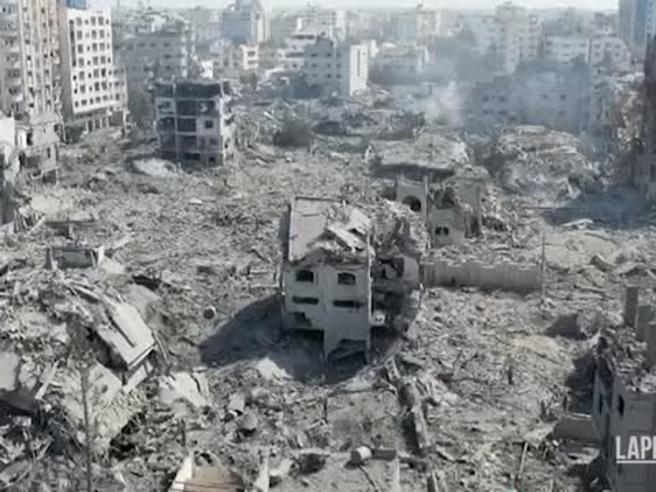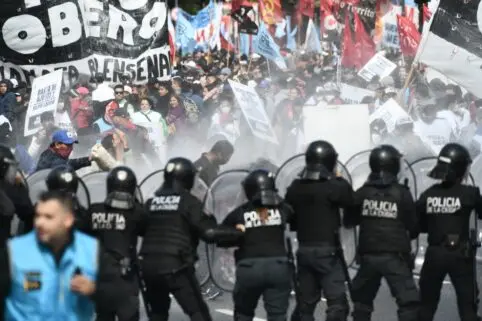
Ieri, il 2 settembre, c’e’ stato uno sciopero generale nazionale in India, a cui hanno aderito piu’ di 140 milioni di lavoratori. Secondo gli organizzatori e’ lo sciopero “piu’ grande di sempre nel mondo”, con una partecipazione addirittura superiore a quella dello sciopero generale dello scorso anno (120-140 milioni). E’ il diciassettsesimo sciopero generale nazionale dal 1991, quando l’India ha preso la strada fatta di liberalizzazioni, privatizzazioni, globalizzazione; una strada che, tanto piu’ dopo lo scoppio della crisi nel 2008, abbiamo imparato a conoscere bene anche in Occidente. Lo sciopero indiano e’ la nuova tappa di una lotta contro le “politiche anti-lavoratori e anti-popolari” che affliggono la popolazione lavoratrice ovunque nel mondo. Lo sciopero indiano ci mostra un esempio da seguire.
Scorrendo qui di seguito trovate dei materiali di approfondimento in inglese (alcune notizie in italiano sul profilo FB Rosa Lux), e qui c’e’ un aggiornamento sull’All-India strike 2016.
1) The Importance of the September 2nd General Strike. What every working Indian needs to know about the all-India trade union strike – and why it matters (Socialist Project • E-Bulletin No. 1299 September 2, 2016)
Since India embraced what trade unions call the LPG route to growth (that is liberalization, privatization and globalization) in 1991, the country has seen 16 general strikes. And the 17th all India workers’ strike falls on September 2nd. The last general strike, observed on 2 September 2015, saw participation from nearly 150 million workers – that’s half the population of the entire U.S., or more than the combined population of the UK, Canada and Australia. This year, the unions expect a better turnout given the controversial labour policies pursued by the Narendra Modi-led NDA government.
Why are the workers resorting to industrial action? And why have they been doing this so consistently over the past decade or more? In this strike, all central trade unions, except the RSS-backed Bharatiya Mazdoor Sangh (BMS), will join hands with independent national federations of workers in banks, insurance, telecom and state and central government departments to protest what they call the “anti-worker, anti-people policies of the government pushing the lives of the working people at large as well as the national economy to the path of disaster.” So, are these unions striking just for getting their kitty fatter, as alleged by a section of the media and office-bearers of the BJP and some ministers? A closer look at the unions’ charter of demands will give some clues.
Charter of demands
First off, the unions want the government to take urgent measures to contain price rise by making the public distribution system more efficient and banning speculative trade in the commodity market. Prices of essential commodities – which hits the common man where it hurts – have been soaring in the country for a while now. As economists CP Chandrasekhar and Jayati Ghosh recently noted, the annual consumer inflation began rising in August 2015, and hit a one-year high in July. Which means, the unions are not sleep-talking. Price rise is a real and present danger. The next demand is to generate employment through concrete measures. It is a fact that India has not been able to deliver a meaningful increase in the number of jobs in the past few decades, especially during the 25 years of economic reforms. The National Sample Survey Office data on jobs in 2011 showed that between 2004-05 and 2009-10, only 1 million jobs were added every year, while the economy grew at a record average of 8.43 per cent annually, and, shockingly, 55 million people joined the labour force. Now, nearly 1 million people enter the job market every month.
The unions want strict enforcement of all basic labour laws without any exception or exemption and stringent measures to punish those who violate these rules. This demand gains so much importance at a time when the government itself is seen diluting key labour regulations such as the Factories Act of 1948 and the Shops and Establishments Act, giving more powers to employers and making employees vulnerable to exploitation. In this context, the unions’ demand for universal social security cover for all workers seems all the more important. To be fair, this is not an unusual demand. Workers in many advanced countries such as Canada and Sweden enjoy universal social security benefits.
And that’s why the next demand of the unions – minimum wage of not less than Rs.18,000 [about $350 CDN] a month with provisions of indexation (for unskilled worker) – is critically important. The Minimum Wages Act-1948 says the government should review wages every five years. But that rarely happens. For instance, the farm sector saw its last revision in 2005; sweeping and cleaning was reviewed in 2008, and construction in 2009. India’s informal work sector is staring at a crisis today with hire-and-fire policies making job prospects alarmingly unstable. This is an area where even organized trade unions have not been able to make much inroads into. Even though the NDA government stated a few months ago that it was going to review minimum wages, nothing substantial has come through. The unions’ charter calls for assured, enhanced pension not less than Rs.3,000 a month for the entire working population. This includes unorganized sector workers as well. Hence, the unions want the government to initiate policies to stop contractorization in permanent/perennial work and payment of the same wage and benefits for contract workers as that of regular workers for “the same and similar work.” They also demand removal of all ceilings on payment and eligibility of bonus and provident fund and increase in quantum of gratuity.
Stop Disinvestment and Privatizing
The unions demand the government stop disinvestment in Central and State public sector companies. This year, the government has set the total target for divestment at Rs.56,500 crore. While the government claims that disinvestment can help it improve the structure of incentives and accountability of state-run companies, workers claim that so far the experience has been discouraging. The government is privatizing even profit-making companies, not just the loss-making ones as promised, imperiling millions of workers and even shaking the foundations of the economy in favour of what the unions call “private monopoly capital.” They also demand no foreign direct investment in critical and nationally important sectors such as the Railways, defence and other strategic sectors. But the government does not buy this logic. The official think-tank of the Centre, the Niti Aayog, has already called for privatizing the Railways. And there are already moves to bring in private participation in defence.
And that takes us to the final and most important component in the unions’ demand list – no unilateral amendment to labour laws. The unions allege that most of the critical labour regulations initiated by the NDA in the recent past were taken unilaterally and the government did not consult with any of the trade unions. Of course, the finance minister and labour minister had met with BMS leaders for exclusive discussions, but no other important union was involved in these consultations. So, the unions say it’s a ‘make-or-break’ moment in history for them and industrial action is the only way forward. In sum, how India’s workers respond to September 2nd will be critical to the future of employment in the country.
![]()
2) India Braces for a Massive Nation-Wide Strike (by Padmapriya Govindarajan, The Diplomat, 2nd September 2016)
A massive strike, pulling in 140 million workers, is set to begin in India.
On September 2, 2016, in response to a call by India’s Central Trade Union Organizations (CTUOs), workers from different sectors will participate in a nationwide strike. Termed the “Bharat Bandh 2016” (All-India Strike 2016), it will include workers across 10 states, and the numbers are expected to significantly cross the 140 million mark, which was the estimate of a strike held this same day last year. Gathering against what they call the “anti-worker and anti-people” policies of the state, the demands of those participating have been put forward in a 12-point charter. They include an increase in the minimum wage to $270 per month, an assured enhanced pension of not less than $45 per month and universal social security coverage for all workers. They have also asked for strict enforcement of basic labor laws and no unilateral amendment of the same, as well as a refusal to allow foreign direct investment in strategic sectors like railways and defense.
Prime Minister Narendra Modi chaired an emergency meeting earlier this week in an attempt to preempt the strike. The central government aimed to dissuade it by raising the minimum wage to $180 per month, and Finance Minister Arun Jaitley said he would ensure the provision of two years’ worth of bonuses to central government employees, which has been pending for a while. While the government has identified eight out of the 12 demands as strictly worker-related and states that it has been willing to bend regarding seven of them, the unions did not budge. They perceived the government’s attempts as part of a spectrum that ranged from insincere and hurried to even insulting, and decided to go ahead with the plan.
The strike will include workers from multiple prominent public sector organizations like Coal India Limited, Oil and Natural Gas Corporation (ONGC), Bharat Heavy Electricals Limited (BHEL), and Hindustan Aeronautics Limited (HAL). The broad sector count includes electricity, transportation, mining, telecom, banking (including Reserve Bank of India employees), and insurance – in varying degrees across the states. Domestic workers’ unions are increasingly joining the count, and in some states autorickshaw drivers have joined the call, with the city of Mumbai being a notable exception to this.
Although it is gaining momentum and ready to go on full steam, the strike will not impede several activities like the delivery of essential commodities like milk. Individual states and their ministers have been reacting differently, with West Bengal Chief Minister Mamata Banerjee declaring that public transport will function normally within her domain, and offices will not be permitted to shut. Private banks and ATMs will work around the country, as will several private cab services. Those employed in the Indian Railways will not be participating as the government has already constituted a committee to look into their demands for a wage increase under the 7th Pay Commission. But almost all prominent trade unions have joined this call – with the Bharatiya Mazdoor Sangh, an affiliate of prominent right-wing group Rashtriya Swayamsevak Sangh (RSS), being the only one to pull out.
The trade unions however are resolute this time. In fact, 14 prominent trade unions from across the nation have come together to form an umbrella known as the Mazdoor Adhikar Sangharsh Abhiyaan (MASA), which includes workers across sectors like cotton, automotive, agriculture, and manufacturing. They believe that the current CTUOs have largely failed the worker by not being strong enough and compromising more than they need to. In the wake of the upcoming strike, the MASA has banded and will certainly join the strike, but will also aim for stronger mobilization on the agendas of higher minimum wage, abolition of contract labor, and ending arbitrary labor law reforms. While this strike promises to be loud and vociferous this year, louder still is the resolve that underlies its spirit.





Rispondi